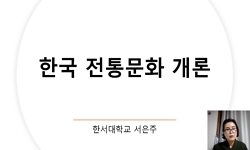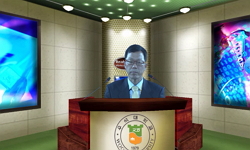This study selected traditional coloring as one of the ways to help students understand the traditional art culture of Korea, while establishing and applying a plan to activate the elementary school art and traditional coloring education according to ...
http://chineseinput.net/에서 pinyin(병음)방식으로 중국어를 변환할 수 있습니다.
변환된 중국어를 복사하여 사용하시면 됩니다.
- 中文 을 입력하시려면 zhongwen을 입력하시고 space를누르시면됩니다.
- 北京 을 입력하시려면 beijing을 입력하시고 space를 누르시면 됩니다.

2007 개정 교육과정에 따른 초등 미술과 전통색채교육 활성화 방안 = A study on the Korean traditional color education in elementary school
한글로보기부가정보
다국어 초록 (Multilingual Abstract)
This study selected traditional coloring as one of the ways to help students understand the traditional art culture of Korea, while establishing and applying a plan to activate the elementary school art and traditional coloring education according to the curriculum revised in 2007. The teaching-learning methods and contents for the traditional coloring education were based on the research on teaching-learning methods for elementary and middle schools according to the name system of Korean standard colors revised by grafting the three kinds of art domains such as aesthetic experience, expression and appreciation, they were classified in stage and developed according to students' cognitive development phases and creativity development characteristics. As a stage of sensuous experience activity for colors through natural observation in student's daily lives, the first stage consists of elements for them to perceive colors and feel the feelings of colors. As a stage of technical and creative expression activity through integrated curricular activities, the second stage consists of guidance elements for color attribute, contrast, application, symbol and synesthesia. As a stage of appreciation and criticism activity for colors through on-line and off-line, the third stage consists of guidance elements with on-line appreciation and criticism activities through computer media and off-line appreciation and criticism activities by visiting museums. On the basis of all the stages mentioned above, the art class was conducted. Unfortunately, the traditional coloring has not been academically systemized, and the sample coloring system is not widely distributed all over people's daily lives. Therefore, it is needed to develop and distribute more practical and systematic materials so that the traditional coloring education may be applied to art classes in a more interesting and effective way.
국문 초록 (Abstract)
정보통신 기술과 교통의 발달은 문화의 세계화 현상을 불러왔다. 이러한 시점에서 타 문화의 일방적인 모방과 수용에서 벗어나 전통성과 고유성을 지닌 자국 문화에 대한 인식을 바탕으로 ...
정보통신 기술과 교통의 발달은 문화의 세계화 현상을 불러왔다. 이러한 시점에서 타 문화의 일방적인 모방과 수용에서 벗어나 전통성과 고유성을 지닌 자국 문화에 대한 인식을 바탕으로 독창성과 창조성을 도출해낼 수 있는 능력을 기르는 교육이 더욱 더 절실히 필요하다. 이에 본 연구는 우리나라의 전통미술문화를 이해하는 하나의 방법으로 전통색채를 선정하여 2007 개정 교육과정에 따른 초등 미술과 전통색채교육 활성화 방안을 구안하여 적용하였다. 즉, 본 연구에서는 2007 개정 초등 미술과 교육과정에 나타난 전통색채교육 내용 분석과 학생, 교사의 설문을 통해 전통색채 지도방향을 제시하고, 수업모형을 구안·적용함으로써 2007 개정 교육과정에 따라 초등학생들이 전통 색채를 좀 더 쉽게 이해하고 활성화할 수 있는 방안을 모색하였다. 전통색 활성화 방안으로는 인지적·창의적 발달단계에 따른 학년별 전통색채 교육내용을 근거로 하여 미적 체험, 표현, 감상의 세 가지 영역에서 내용과 방법을 모색하였으며, 그 활동으로는 첫째, 생활 속 자연관찰을 통한 색의 감각적 체험 활동과 둘째, 통합교과적 활동을 통한 색의 기술적·창조적 표현 활동. 셋째, 온라인·오프라인을 통한 감상 및 비평 활동으로 지도 요소로 구성을 하여 수업을 전개하였다. 그 결과 전통색채의 관념적이고 상징적인 의미를 전통문화와 관련하여 미술 활동을 함으로써 전통색채에 대한 이해와 인식이 높아졌으며, 전통색채에 담긴 우리 조상들의 가치관과 미의식을 알고 민족의 전통색에 대한 정체성과 자부심을 정립할 수 있었다. 아울러 학생들이 전통색채를 현대적으로 계승·발전시키고자 하는 의지를 갖게 한 계기도 되었다. 그러나 전통색채가 아직 학문적으로 체계화되어 있지 않고 그 표본 색체계가 생활에 널리 보급되어 있지 않은 실정으로. 전통색채교육이 보다 재미있고 효과적으로 적용될 수 있는 현실적이고 체계적인 자료가 보다 많이 계발 보급 되어져야 할 것이다.
참고문헌 (Reference)
1 이주연, "한국 표준색이름 체계 개편에 따른 초.중등학교 색채 교수.학습 방법 연구" 한국조형교육학회 (32) : 385-448, 2008
2 박소영, "초등학교 미술과 교수․학습 방법 연구" 한국교육과정평가원. 2002
3 안혜영, "중학교 미술 교과서" (주)미래엔 컬쳐그룹. 2010
4 이성도, "중학교 미술 교과서" (주)교학연구사. 2010
5 김용주, "중학교 미술 교과서" (주)지학사. 2010
6 김정희, "중학교 미술 교과서" (주)지학사. 2010
7 박은덕, "중학교 미술 교과서" (주)중앙교육진흥연구소. 2010
8 조중현, "중학교 미술 교과서" (주)미진사. 2010
9 교육부, "제7차 교육과정"
10 박명원, "전통색채의 발굴과 교육방안 연구" 한국미술교육학회 14 : 95-142, 2002
1 이주연, "한국 표준색이름 체계 개편에 따른 초.중등학교 색채 교수.학습 방법 연구" 한국조형교육학회 (32) : 385-448, 2008
2 박소영, "초등학교 미술과 교수․학습 방법 연구" 한국교육과정평가원. 2002
3 안혜영, "중학교 미술 교과서" (주)미래엔 컬쳐그룹. 2010
4 이성도, "중학교 미술 교과서" (주)교학연구사. 2010
5 김용주, "중학교 미술 교과서" (주)지학사. 2010
6 김정희, "중학교 미술 교과서" (주)지학사. 2010
7 박은덕, "중학교 미술 교과서" (주)중앙교육진흥연구소. 2010
8 조중현, "중학교 미술 교과서" (주)미진사. 2010
9 교육부, "제7차 교육과정"
10 박명원, "전통색채의 발굴과 교육방안 연구" 한국미술교육학회 14 : 95-142, 2002
11 박명원, "색채교육의 변천과 전통색채교육의 방안 고찰" 한국미술교육학회 13 : 231-250, 2002
12 양윤정, "미술과 교육과정 개정 시안" 한국교육과정평가원 2005
13 교육인적자원부, "미술과 교육과정"
14 교육과학기술부, "3, 4학년 미술 교과서"
15 교육과학기술부, "2007 개정 교육개정"
동일학술지(권/호) 다른 논문
-
초등교사 임용시험 미술과 출제 문항 분석 및 개선 방안
- 한국초등미술교육학회
- 이주연
- 2010
- KCI등재
-
- 한국초등미술교육학회
- 이유미
- 2010
- KCI등재
-
- 한국초등미술교육학회
- 류지영
- 2010
- KCI등재
-
미적 교육과 인성 교육과의 연관성 연구 - ‘쉴러’와 ‘장자’를 중심으로 -
- 한국초등미술교육학회
- 이화식
- 2010
- KCI등재
분석정보
인용정보 인용지수 설명보기
학술지 이력
| 연월일 | 이력구분 | 이력상세 | 등재구분 |
|---|---|---|---|
| 2028 | 평가예정 | 재인증평가 신청대상 (재인증) | |
| 2022-01-01 | 평가 | 등재학술지 유지 (재인증) |  |
| 2019-01-01 | 평가 | 등재학술지 유지 (계속평가) |  |
| 2016-01-01 | 평가 | 등재학술지 유지 (계속평가) |  |
| 2013-01-01 | 평가 | 등재 1차 FAIL (등재유지) |  |
| 2010-01-01 | 평가 | 등재학술지 유지 (등재유지) |  |
| 2008-05-02 | 학회명변경 | 한글명 : 한국교육대학교 미술교육학회 -> 한국초등미술교육학회영문명 : Art Education Society Of National Universities In Korea -> Korea Elementary Art Education Association |  |
| 2007-01-01 | 평가 | 등재학술지 선정 (등재후보2차) |  |
| 2006-01-01 | 평가 | 등재후보 1차 PASS (등재후보1차) |  |
| 2005-10-17 | 학술지명변경 | 한글명 : 미술교육논총 -> 미술교육연구논총 |  |
| 2005-10-17 | 학술지명변경 | 한글명 : 미술교육논총 -> 미술교육연구논총 |  |
| 2005-01-01 | 평가 | 등재후보학술지 유지 (등재후보1차) |  |
| 2003-01-01 | 평가 | 등재후보학술지 선정 (신규평가) |  |
학술지 인용정보
| 기준연도 | WOS-KCI 통합IF(2년) | KCIF(2년) | KCIF(3년) |
|---|---|---|---|
| 2016 | 0.61 | 0.61 | 0.74 |
| KCIF(4년) | KCIF(5년) | 중심성지수(3년) | 즉시성지수 |
| 0.86 | 0.84 | 0.933 | 0.2 |




 KCI
KCI






